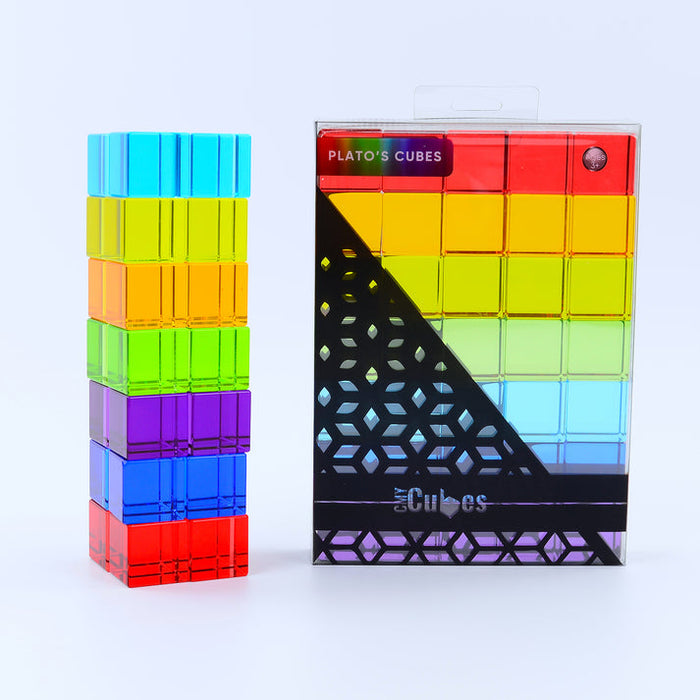
Plato's Cubes
Plato's cubes refer to the Platonic solids, which are five special types of polyhedra. Each of these solids has faces that are identical regular polygons, and the same number of faces meet at each vertex. Get ready to add some shape to your playtime! Plato's Cubes are five unique polyhedra that each have matching regular faces and vertices. A cube that packs a punch - perfect for exploring and learning shapes! The five Platonic solids are:
- Tetrahedron: Composed of 4 equilateral triangular faces.
- Hexahedron (Cube): Composed of 6 square faces.
- Octahedron: Composed of 8 equilateral triangular faces.
- Dodecahedron: Composed of 12 regular pentagonal faces.
- Icosahedron: Composed of 20 equilateral triangular faces.
These solids are named after the ancient Greek philosopher Plato, who associated them with the classical elements: fire, earth, air, water, and the universe. The cube, in particular, is often referred to as "Plato's cube" and is associated with the element of earth due to its stability and grounded nature.
 is here! Shop now, pay later in 4 easy installments
is here! Shop now, pay later in 4 easy installments









